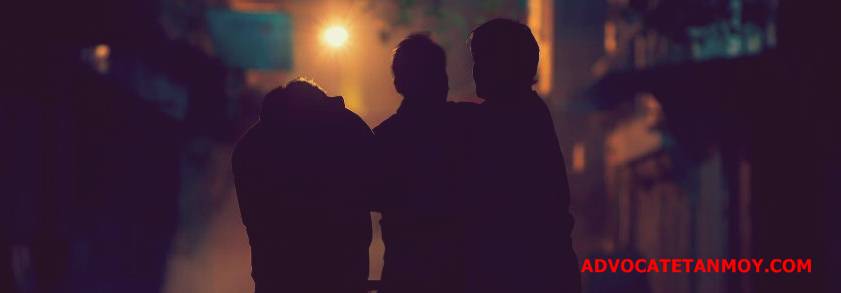Criminology is the study of how various acts are perceived and defined in society. The questions that arises are: What kinds of acts are defined as problems? What kind of...
Criminology
The object of hearing evidence is to enable the Court to Form its belief in the truth or otherwise of the alleged occurrence and of the guilt of the accused....
Criminology: Definition and Scope; Criminology and other Social Sciences; Criminology
vs. Criminal Justice. Structure of Criminal Justice System in India; Role of Legislature
and Law making; Coordination among Criminal Justice System. Participation...
The Supreme Court of India has given directions for police reforms, the admission of prisoners to open-air jails, and actions wrong in themselves known as Mala Prohibita. The aggregate of...
The origin of probation can be traced to English criminal law of the Middle Ages. Harsh punishments were imposed on adults and children alike for offenses that were not always...
This list cannot detail every event that has altered the manner in which bail has changed. Instead, the focus of this timeline provides evidence that governmental actors must maintain high...
The Probation Act of 1925, signed by President Calvin Coolidge, provided for a probation system in the federal courts (except in the District of Columbia). It gave the courts the...
The Romans never condemned a citizen to death, unless for crimes which concerned the safety of the state. These our masters, our first legislators, were careful of the blood of...
This custom, with many others, is derived from our canon law, which denies Christian burial to those who are guilty of suicide, concluding thence, that it is not lawful to...
There is a growing literature on biological explanations of antisocial and criminal behavior. This paper provides a selective review of three specific biological factors – psychophysiology (with the focus on...
Criminology consists of three principal divisions, as follows; [a) the sociology of law, which is an attempt at scientific analysis of the conditions under which criminal laws develop and which...
Criminology is the body of knowledge regarding crime as a social phenomenon. It includes within its scope the proce.sses of making laws, of breaking laws, and of reacting toward the...
Crime occurs when there is an intersection in time and space of a motivated offender, an attractive target, and a lack of capable guardianship.
People’s daily routine activities affect the likelihood...
Prisons Act, 1894—Section 28—Prison—Conditions—Direction for its reform given by Supreme Court.
Age and Criminal Behavior Abuse and Criminal Behavior Biochemical Theories of Criminal Behavior Body-Type Theories of Criminal Behavior Classical Criminology Containment Theory Corporate Behavior and Crimes Critical Criminology Cultural Criminology...
Babylonian Legal Traditions CrimeCrime A positive or negative act in violation of penal law; an offense against the state classified either as a felony or misdemeanor. and Justice in Colonial...
It is not only the common interest of mankind that crimes should not be committed, but that crimes of every kind should be less frequent, in proportion to the evil...
Historical development of Victimology. Basic Conceptsof Victimology. UN Declaration of Basic Principles of Justice for Victims of Crime and Abuse of Power, 1985. Victim –Offender relationship.Impact of Victimization–Physical, Financial and...
Ved Prakash vs. State of Haryana, 1981 (1) SCC 447 The Apex Court observed that the social background and the personal factors of the crimeCrime A positive or negative act in violation...












